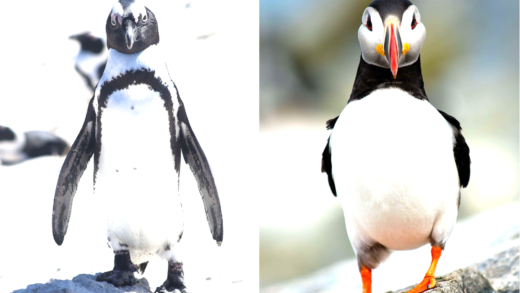Global warming and climate change are critical issues impacting our planet. This article explores the differences between these concepts, their causes, and effects. It emphasizes the importance of mitigation strategies, historical climate events, and the impact of global warming on weather patterns.
Understanding Global Warming
Global warming refers to the long-term rise in Earth’s average surface temperature due to human activities, primarily the emission of greenhouse gases. This phenomenon is a significant aspect of climate change, as it primarily stems from the burning of fossil fuels, deforestation, and industrial processes. The increase in these gases, such as carbon dioxide and methane, traps heat in the atmosphere, leading to a gradual increase in temperature.
The significance of global warming lies in its widespread impacts on the planet. For instance, it can result in severe weather events, rising sea levels, and the disruption of ecosystems. Understanding global warming is crucial because it helps us recognize the urgent need for mitigation strategies to protect our environment and ensure a sustainable future.
What is Climate Change?
Climate change encompasses a broader range of changes in weather patterns and temperatures that occur over extended periods. While global warming specifically refers to the increase in Earth’s temperature, climate change includes shifts in precipitation patterns, sea level rise, and alterations in wind patterns. These changes can be attributed to both natural processes and human activities.
Climate change affects the environment in various ways. For example, it can lead to habitat loss for numerous species, increased frequency of natural disasters, and challenges for agricultural practices. Understanding climate change is vital for developing effective adaptation and mitigation strategies to minimize its impacts on ecosystems and human societies.
Distinguishing Global Warming and Climate Change
The terms global warming and climate change are often used interchangeably, but they represent different concepts. Global warming specifically refers to the increase in Earth’s average surface temperature, primarily due to human activities. In contrast, climate change refers to the broader range of environmental changes that result from this warming.
- Global Warming: Focuses on temperature rise and its direct effects.
- Climate Change: Encompasses all changes in climate, including temperature, precipitation, and weather extremes.
Understanding these distinctions is crucial for addressing the challenges posed by each. While global warming is a driving force behind climate change, the latter includes various factors and consequences that require comprehensive strategies for mitigation and adaptation.
Causes of Global Warming
Global warming results from various human activities and natural processes. The primary human activities contributing to global warming include:
- Burning Fossil Fuels: The combustion of coal, oil, and natural gas for energy releases significant amounts of carbon dioxide (CO2) into the atmosphere.
- Deforestation: Cutting down trees reduces the planet’s capacity to absorb CO2, exacerbating the greenhouse effect.
- Industrial Processes: Manufacturing and chemical production emit greenhouse gases, including methane and nitrous oxide.
- Agriculture: Farming practices, particularly livestock production, release methane and nitrous oxide, potent greenhouse gases.
Natural processes also play a role, albeit to a lesser extent. Volcanic eruptions can release large amounts of CO2 and ash, temporarily affecting climate patterns. However, the human impact on global warming far outweighs these natural factors.
Effects of Climate Change
Climate change has profound effects on ecosystems, weather patterns, and human life. Some notable impacts include:
- Extreme Weather Events: Increased temperatures lead to more frequent and severe weather events, such as hurricanes, droughts, and floods.
- Rising Sea Levels: Melting polar ice caps and glaciers contribute to rising sea levels, threatening coastal communities.
- Impact on Biodiversity: Changing climates disrupt habitats, leading to species extinction and loss of biodiversity.
- Agricultural Challenges: Altered weather patterns affect crop yields, threatening food security.
These effects highlight the urgent need for action to mitigate climate change and adapt to its impacts.
Human Contributions to Global Warming and Climate Change
Human activities are the primary drivers of global warming and climate change. Key contributors include:
- Transportation: Vehicles emit large quantities of CO2 and other pollutants, significantly impacting air quality and climate.
- Energy Production: Power plants that rely on fossil fuels are major sources of greenhouse gas emissions.
- Waste Management: Landfills generate methane as organic waste decomposes, contributing to global warming.
- Residential Heating: Heating homes using fossil fuels releases CO2 into the atmosphere.
Addressing these human contributions is essential for reducing the impact of global warming and climate change. Implementing cleaner energy sources and improving energy efficiency can help mitigate these effects.
Mitigation Strategies for Global Warming and Climate Change
To combat global warming and climate change, individuals and communities must adopt effective mitigation strategies. Here are some practical tips:
- Reduce Energy Consumption: Use energy-efficient appliances and switch off lights when not needed. Simple actions like these can significantly lower greenhouse gas emissions.
- Utilize Renewable Energy: Consider solar panels or wind energy to power your home. This transition can reduce reliance on fossil fuels.
- Practice Sustainable Transportation: Use public transport, carpool, or cycle instead of driving alone. This approach cuts down on emissions from vehicles.
- Support Local Agriculture: Buy local produce to reduce the carbon footprint associated with transportation. Eating less meat and more plant-based foods can also help.
- Engage in Reforestation: Participate in tree-planting initiatives. Trees absorb CO2, helping to mitigate global warming.
Implementing these strategies not only helps mitigate global warming but also fosters community engagement and awareness about climate issues.
Historical Examples of Climate Change
Throughout history, climate change has been evident through various significant events. One notable example is the Medieval Warm Period (approximately 950-1250 AD), when temperatures were higher than average, impacting agriculture and settlements in Europe. Conversely, the Little Ice Age (1300-1850) brought cooler temperatures, leading to crop failures and famines.
These historical instances illustrate that climate change is not a new phenomenon. They underscore the reality that shifts in climate can have drastic consequences for societies and ecosystems. Understanding these past events can provide insights into current climate challenges and the importance of addressing them proactively.
Impact of Global Warming on Weather Patterns
Global warming profoundly affects weather patterns worldwide. As temperatures rise, several changes occur:
- Increased Frequency of Extreme Weather: Warmer temperatures contribute to more frequent and severe hurricanes, heatwaves, and heavy rainfall.
- Altered Precipitation Patterns: Some regions may experience more intense storms, while others may suffer from prolonged droughts, affecting water supply.
- Disruption of Ecosystems: Changes in weather patterns can lead to habitat loss for many species, further threatening biodiversity.
These impacts highlight the urgent need for comprehensive strategies to address global warming. By understanding how it alters weather systems, we can better prepare for the challenges that lie ahead.





Comments are closed.